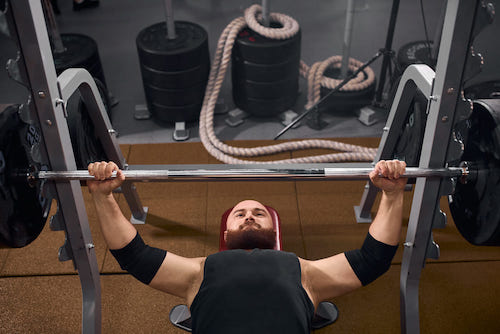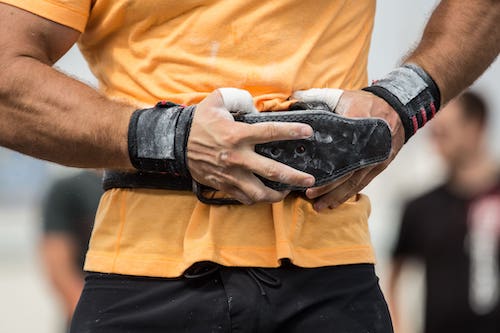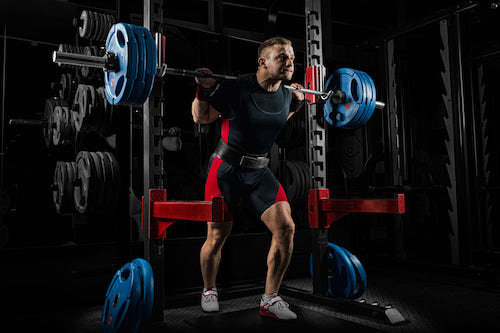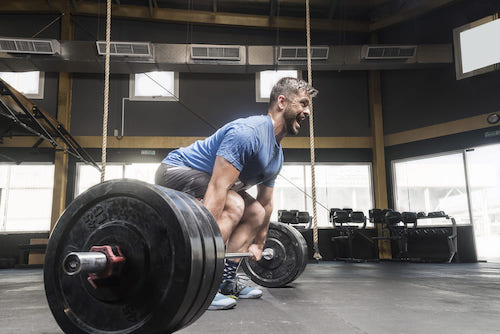Your cart is empty
Start Shopping
You’ve probably stared at a pro, at the gym, or on the TV screens wearing those new-fangled elbow sleeves. On a tennis match, a soccer field, or a bodybuilding event. Probably thinking to yourself, “why in God’s name do they simply not wear a long sleeve shirt?” Well, there’s a reason for that. Elbow sleeves for lifting, according to one scientific study, lower blood lactate levels and blood pooling thanks to their main feature — compression. Those two hoodlums, lactate levels, and blood pooling ate the main culprits that cause swelling and pain. With that little nugget of wisdom now embedded into your noggin, let’s take a look at everything you need to know about these less-than-fashionable – but highly advantageous – gym clothing options.
What are elbow sleeves for lifting?
Elbow sleeves are used for lifting weights. They are usually made from neoprene or lycra, and they cover the elbow and the forearm. Elbow sleeves are used to protect your elbows while you perform weightlifting exercises. As a result, they help to prevent injuries to your elbows and arm muscles. They also provide compression, which can reduce arm fatigue during workouts.
Elbow sleeves are a popular choice for those who lift weights or do other forms of resistance training.
It is important to know when one should wear elbow sleeves for lifting and when one should not. If you have an injury that needs treatment, elbow sleeves can help provide support and stability during rehabilitation. However, if you don’t have any injuries or restrictions on your movements, then there’s no need to wear them while lifting weights.
And it all began, the whole elbow sleeve craze due to bursitis in the right elbow.

The origin of elbow sleeves for lifting
In the 2000-01 basketball season, Allen Iverson’s shooting elbow had developed a rather nasty case of bursitis — swelling constantly. His sponsors started creating a sleeve to help him out, one that added extra compression to the area. The first time he came out, the public was boggled by the fashion item. After a few games of head-scratching puzzlement, fans started to wear them as a fashion statement.
From that origin, companies started to invest heavily in elbow sleeves, and develop the current – compression – ones we have in the market. Specially designed sleeves for every sport under the sun. Today, apparel giants have all kinds of elbow sleeves, longer ones for runners and basketball players, tight slim ones for tennis pros, and the rouged – meant to take a super beating – bullet-proof ones making the rounds in the weigh-lifting section of your gym.
What are the benefits of elbow sleeves?
Here’s the historical snafu — Although sleeves became popular thanks to Iverson, they have been in use since ancient times. Epic figures like Alexander the Great utilized wrapping around one’s arms to improve his perforce during battle and protect against injuries. He was certain that they helped improve his overall strength and resilience. These elbow wraps, which later became tech-heavy elbow sleeves, constructed out of new-age fabric, have been employed in weight training since the late 1800s and this is mostly due to their amazing benefits.
At their core, elbow sleeves are a type of compression garment that is worn to provide support and relief for the muscles, tendons, and joints. Athletes and lifters use them to support their elbows from injuries, increase blood flow and improve recovery time. Elbow sleeves can also be used by people who suffer from arthritis or other conditions that cause pain in the elbow.
Let’s break some of those benefits down:
More weight
The extra brace around your arm and joints prevents injuries — this allows you to lift heavier loads and break some of your lifting records.
Stability
By snapping tight your joints, and packing them up like sausages, elbow sleeves increase your stability.
Pressure
They decrease the pressure around your elbow joint — you’ll ease the amount of friction and pressure you’re putting on your tendons or ligaments.
Muscle soreness
If you start to use an elbow sleeve before, during, and a bit after your exercise, your elbows and arms will feel much less sore after a strenuous training session. Studies have shown that athletes recuperate faster thanks to them. In many cases, they have become an essential training tool for people whose daily activities outside of their gym require them to constantly use their hands or arms — for typing, playing video games, or heavy labor.

Easy to wear
They are extremely easy to wear. You can use an elbow sleeve underneath your clothes after you’ve finished exercising, either for some extra support or simply because you didn’t have the time to change.
The MCU look
Finally, let’s be honest, there’s a reason why they became so popular — they simply look cool. You’ll feel like a superhero. They attach with Velcro and are extremely customizable. Today, you can find elbow sleeves that not only help you out lifting weights but serve as a fashion statement and proclamation as to who you are underneath all those muscles.
What to consider when buying elbow sleeves for lifting?
It can be tricky to find the perfect pair of elbow sleeves. This guide will help you find the best elbow sleeve for your needs. Let’s hand out some great tips!
When choosing elbow sleeves, first consider the material from which they are made. Many brands use a combination of polyester and neoprene, as this offers both comfort and durability. Additionally, look for durable stitching that ensures the seams won’t come apart during strenuous activities. Furthermore, make sure the fit is snug but not too tight – this will provide adequate support while still allowing full range of motion in your arms.
Also, when buying elbow sleeves, it is important to consider the length of your arms. If you have long arms and need to cover your elbows, go for longer sleeves. If you have short arms and only need a little coverage, pick shorter sleeves.
If you want an arm warmer instead of an elbow sleeve, make sure that it goes all the way up past your elbows and covers as much skin as possible.



